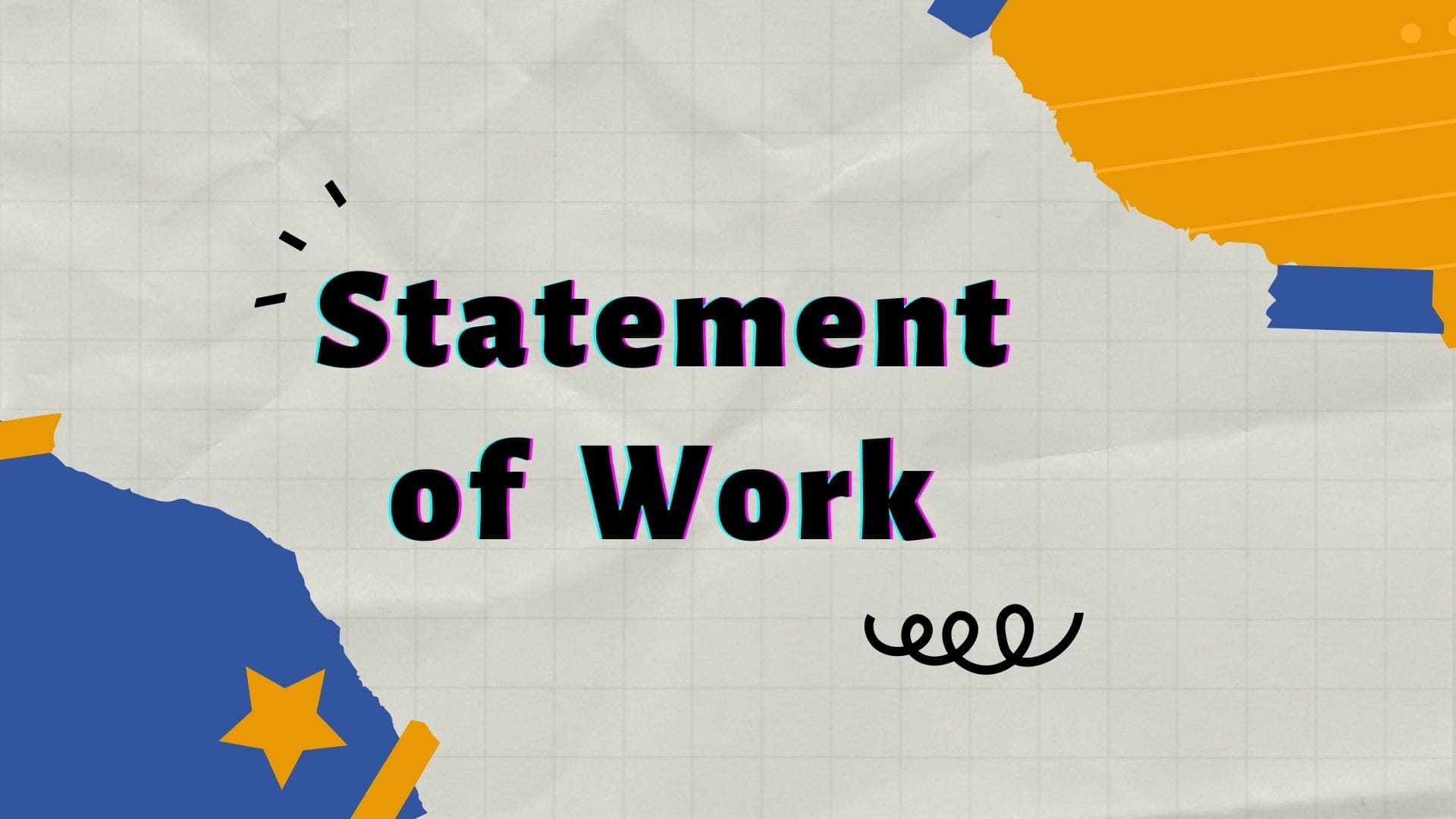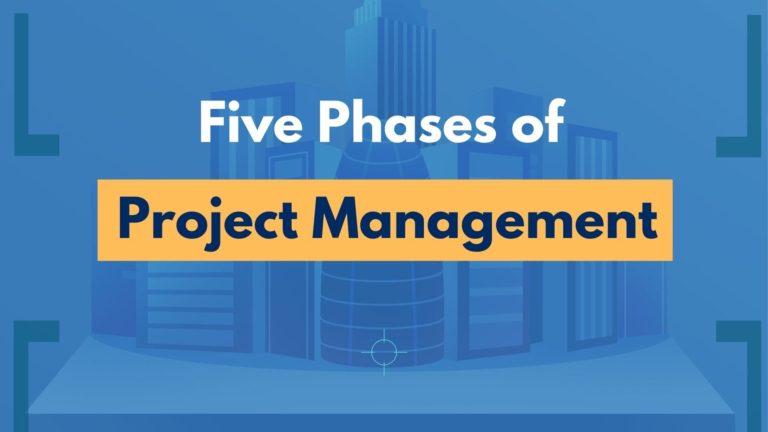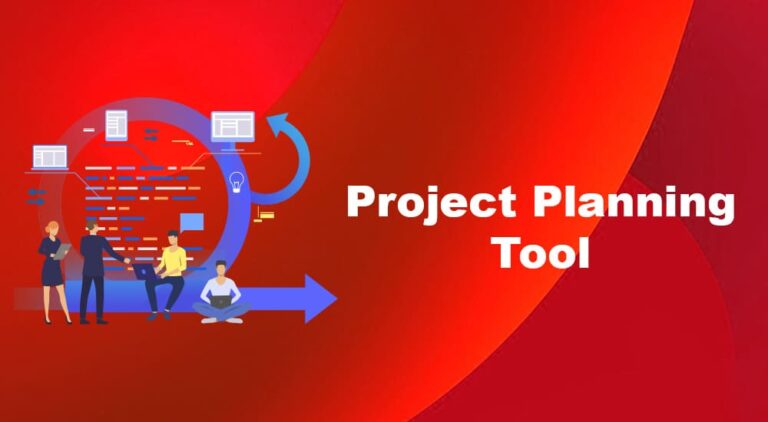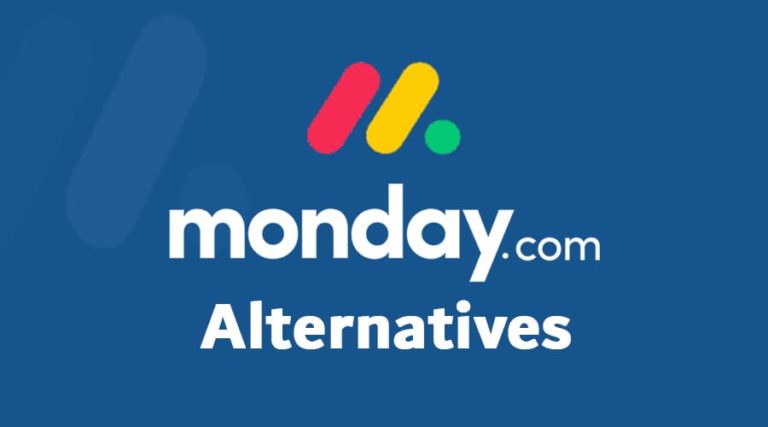A statement of work (SOW) is a document that guides the project manager in completing the project, achieving project objectives, and keeping all stakeholders satisfied.
In today’s article, we will delve into this project document and study the components of a statement of work (SOW) by exploring best practices, types of SOWs, real-world examples, and templates. Finally, we will cover how to write a statement of work.
Let’s get started.
What is a Statement of Work (SOW) in Project Management?
A project statement of work (SOW) is a project management document that outlines the scope, deliverables, and expectations of a project. It is a roadmap for project sponsors, contractors, and other stakeholders. This document lays the groundwork for project success and minimizes conflicts.
Projects with well-defined SOWs are more likely to be completed on time and within budget, providing enhanced communication and collaboration among project stakeholders. According to a survey by the International Association of Project and Program Management (IAPPM), 85% of project managers acknowledged that a robust SOW significantly reduced misunderstandings and disputes during project implementation.
The SOW helps prevent scope creep, a common challenge in project management.
A statement of work is a legally binding document, which is the key to project success. This detailed document defines the terms and conditions of the agreement and the basis of the project-management plan.
After the project charter is approved and requirements are collected, you will define the statement of work (SOW) document. You will take help from your team members and legal department as this is a legally binding document. You don’t have to create it from scratch; every organization has a template to write the statement work; you can pick the right template for your project and create an SOW.
Statement of Work Vs Scope of Work
Before we discuss the SOW further, let’s explain another project management concept called the “scope of work.” Many professionals often confuse the statement of work with the scope of work. However, these terms are different.
The scope of work is part of the statement of work. A statement of work is an authorized document that shows what needs to be done to complete the project, whereas a scope-of-work document shows how project objectives will be achieved.
The statement of work (SOW) outlines the project objectives, deliverables, milestones, timelines, goals, assumptions, and constraints.
The scope of work focuses on project work (e.g., tasks, activities, and functionalities) required to fulfill the objectives outlined in the SOW. It explains the project’s boundaries and defines what is included and excluded.
The statement of work is a comprehensive, high-level document that sets the stage for the entire project, while the scope of work is a more detailed breakdown of the tasks and elements that make up the project.
SOW stands for a statement of work, not scope of work. Some projects may have it as SOW contract, SOW agreement, etc.
What is the Purpose of the Statement of Work (SOW)?
The statement of work (SOW) is a foundational document that outlines the project scope, objectives, and expectations. It facilitates successful project management and collaboration among stakeholders. The SOW establishes a framework for project activities through its narrative, and it clarifies goals, deliverables, and milestones.
SOW has a significant role in defining the project’s boundaries. It creates a shared understanding of the project’s scope, contributes to effective project management, and ensures all parties know their roles and responsibilities.
The SOW includes a timeline, milestones and provides a structured schedule for project activities. This helps manage expectations regarding project progress and deadlines. The document also helps risk management by identifying potential challenges and allowing proactive risk response planning to manage risks.
The SOW is a tool that promotes clear, open communication. It minimizes misunderstandings and disputes, and it establishes a documented agreement that can be used as a reference throughout the project lifecycle.
The SOW forms the basis for contractual agreements, aligning all parties with the project’s requirements and expectations to reduce disputes and legal complications.
You can develop the statement of work for your internal or external projects. However, the SOW is more common for external projects, as it needs more clarity, and all parties must comply with regulations and requirements.
The project SOW helps project managers in the following ways:
- It provides reference documents for all stakeholders.
- It is a good communication tool.
- It conveys all project details to all stakeholders.
- It is a legally binding document once it is signed by all parties.
Types of Statement of Work
SOW can be one of three types, and you can select it based on your industry, type of work requirements, project needs, etc. A correct statement of work clarifies the job description, roles and responsibilities, and stakeholders’ expectations.
Design & Detail SOW
The design & detail statement of work (SOW) outlines specific plans and expectations. This document serves as a detailed roadmap that defines the project’s scope, tasks, and responsibilities clearly and actionably.
Most government, construction, and manufacturing contracts use design and detail SOW. It provides detailed instructions on how the project will proceed and the list of approved suppliers, contractors, vendors, etc.
You can find the precise qualities of materials, dimensions of items, assembly instructions, etc. This contract provides a template to bidders with required fields, and they can fill in the data, pricing details, etc.
Level of Effort SOW
A level-of-effort statement of work (SOW) is also known as a “time-and-material SOW.” You use this statement of work if you require knowledge-based help, consultants, and/or subject-matter experts.
This SOW defines the education qualifications, experience, skills, and experts, the duration of the contract, and other terms and conditions. You pay the experts based on hours or days. This SOW can also require equipment and other services.
This SOW is also knobs as a service contract or manpower contract.
Performance-Based SOW
This SOW is mostly used by the private and public sectors in North America. The project using these conditions focuses on performance instead of how to perform or complete the tasks.
This documents the project’s purpose, objectives, deliverables, and quality requirements. The lack of micromanagement instructions puts the responsibility on the contractor to meet the client’s product specifications and quality requirements.
How Do You Write a Project Statement of Work (SOW)?
The project manager develops a statement of work in collaboration with team members. The project management office will review and approve it for internal projects, or the project sponsors will review and approve it for external projects.
Oregon’s SOW Writing Guide explains the SOW writing process in detail.
You can follow the following steps to write a project statement of work:
1. Provide an Introduction and Define the Objectives
Introduce the project to the audience. You can explain the project and the product deliverables, whether product service or result. Provide a brief of stakeholders’ expectations from the seller and high-level project requirements.
Explain the project objectives and the reasons for the project’s existence. You can define the project budget, duration, high-level timeline, key milestones, key deliverables, key risks, assumptions, constraints, key stakeholders, etc.
2. Define the Project Scope of Work
You will outline the work that the contractor will carry out to complete the project. You can provide the key high-level tasks, deliverables, and quality requirements.
Depending on the project, you can provide more details on tasks. You can divide the phases, break down the project tasks, and provide a list of tasks for a contractor to follow and complete the project.
This is the key project document where you will define all product and project requirements. The statement of work defines Key Performance Indicators (KPIs) to measure the project’s performance.
3. Define the High-Level Project Schedule
In the SOW, you will provide a high-level work schedule for a contractor. This schedule will show key dates on which to deliver project deliverables and milestones.
The contractor will develop their detailed schedule based on the guidelines in the statement of work. Once the project sponsor approves it, the schedule will become a baseline, and the schedule progress will be measured against this performance baseline.
4. Explain the Project Deliverables
This is the key part of the SOW. The purpose of a project is to provide a deliverable. You must explain the project deliverables to the audience. The deliverable can be a tangible product, service, or result.
You can explain if the deliverables will be delivered at the project’s end or certain points during the project lifecycle.
5. Define Industry Standards and Testing
Every industry has some standards and regulations. You will ensure that your SOW includes those standards and regulations.
You will mention applicable industry acceptance criteria or quality standards. If product testing is required, whether it will be in-house or using a third-party inspection service. You can mention the names of TPI service providers or the procedure for in-house inspection.
6. Define the Payment Terms and Conditions
The payment terms depend on the type of contract you will select for your project, i.e., whether it is a fixed price contract, cost reimbursable, or time and materials.
You can pay every month or on completing a percentage of the work, achieving milestones, or any other method agreed upon by all parties involved in the contract.
7. Define the Project Success Criteria
You will describe the project success criteria, and when these criteria are met, you will say the project is completed.
The success criteria should be SMART (Specific, Measurable, Achievable, Relevant, and Time-bound). For example, instead of “high customer satisfaction,” a SMART criterion could be “achieve a minimum 90% rating on post-event surveys within six months of opening.
8. Get the SOW Approved
Once the SOW document is ready, you will circulate it to stakeholders for review and feedback. Afterward, you will review the received feedback, incorporate it into the SOW if required, and submit it for approval.
You will ensure that all parties understand the terms and conditions of the project statement of work before approval.
9. Other Conditions
If something is left that you cannot mention in the above categories, you can write it into other conditions to ensure nothing is left out and every aspect of the SOW is covered.
For example, you don’t want to use certain consumables, want performance resorts in a certain format, insist on using any particular PMIS or project management software, etc.
10. Project Closure
This is the final part of the project SOW. Here, you will define the procedure for ending the project. You will explain how the project sponsor will validate and accept the project deliverables and who will sign it off.
Statement of Work (SOW) Template
The following is a sample SOW template in JPG and Word format. You can download this template for free and use it per your requirements.
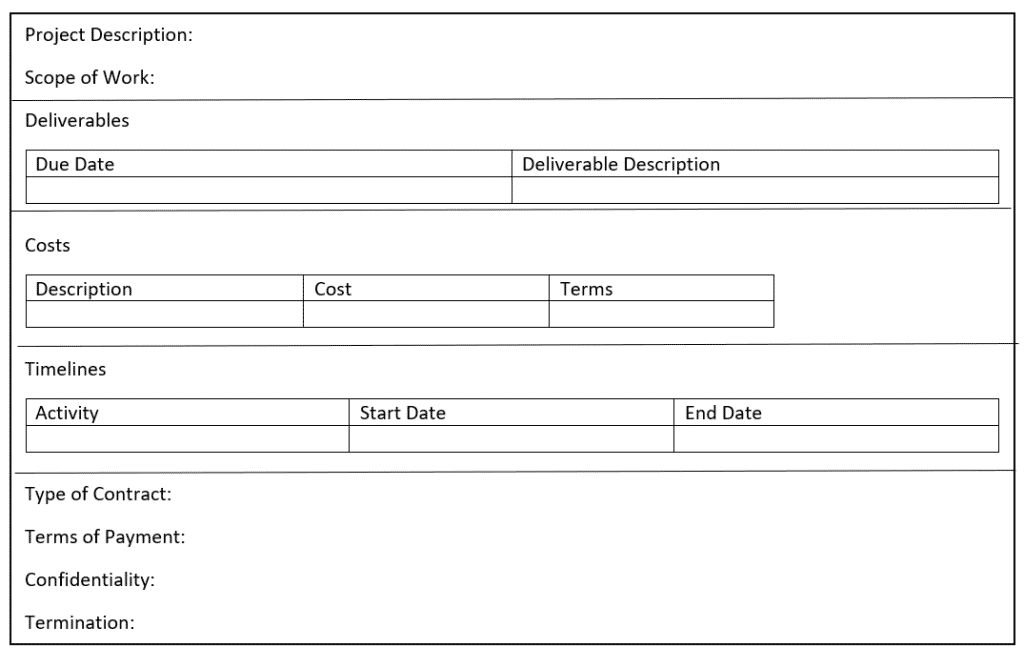
Statement of Work (SOW) Example
The following is a basic example of a project SOW for constructing a school building:
- Project Title: Construction of ABC School Building
- Project Overview: The project involves the construction of a new building for ABC School to accommodate the growing student population. The new facility will include classrooms, administrative offices, laboratories, a library, and other amenities.
- Project Objectives:
- To provide additional space for classrooms and educational facilities.
- To enhance the overall learning environment for students and staff.
- To comply with all relevant building codes and safety standards.
- To complete the construction within the specified time frame and budget.
- Scope of Work:
- Clearing and preparing the construction site
- Excavation and foundation work
- Construction of the building structure (e.g., walls, floors, and roofing)
- Installing electrical, plumbing, and HVAC systems
- Interior finishing (e.g., flooring, painting, and installing fixtures)
- Landscaping and site development
- Compliance with all relevant building codes and regulations
- Deliverables:
- Completed building structure with all necessary amenities
- As-built drawings and documentation
- Certificate of Occupancy from local authorities
- Project Timeline:
- Start Date: January 20, 2024
- Completion Date: January 20, 2025
- Milestones and progress reports to be submitted every month
- Budget:
- The total budget for the project is 400,000 USD.
- The payment schedule is to be agreed upon by both parties.
- Quality Assurance:
- The construction must adhere to industry standards and best practices.
- Regular inspections and quality checks will be conducted throughout the project.
- Safety:
- The contractor is responsible for implementing and enforcing safety measures on the construction site.
- Compliance with all safety regulations and guidelines must be ensured.
- Change Orders:
- Any changes to the scope of work must be approved in writing by both parties.
- Changes may impact the project timeline and budget.
- Communication:
- Regular project meetings to discuss progress and address any concerns
- Communication protocol to be established for effective project management
- Penalties and Incentives:
- Penalties for delays beyond the agreed-upon completion date
- Incentives for early completion (subject to approval)
- Governing Law:
- The laws of California govern this statement of work.
- Signatures:
- Both parties acknowledge and agree to the terms outlined in this statement of work.
- (Signature of Contractor & Date)
- (Signature of School Representative & Date)
SOW Vs Similar Project Documents
In project management, many documents support the project SOW, and some of these may confuse you. The most confusing document is the scope of work, which I have discussed above.
Some similar documents are as follows:
Request for Information (RFI)
A request for information (RFI) document is used in procurement processes to collect details from contractors about their products, services, or capabilities. Organizations issue RFIs to collect comprehensive information and assess the market before issuing an RFP or RFQ.
RFIs seek clarification on offerings, technical specifications, pricing structures, contractor experience, and qualifications. It is not a binding contract. It assists organizations with developing the contract documents and refining subsequent stages in the procurement process.
Request for Proposal (RFP)
A request for proposal (RFP) document helps organizations invite bids from qualified contractors. RFPs provide detailed project requirements, evaluation criteria, and contractual terms, thus enabling potential bidders to submit proposals.
These proposals outline how the bidder intends to meet the project’s needs (e.g., technical solutions, timelines, and cost estimates). RFPs ensure a competitive, transparent procurement process, thus helping organizations select the most suitable vendor.
Request for Quotation (RFQ)
A Request for Quotation (RFQ) is a formal document used in procurement processes to buy consumables and other goods. Unlike RFPs, RFQs focus on pricing details, including unit costs, delivery terms, and payment conditions.
Organizations issue RFQs when they have well-defined requirements and seek competitive bids solely based on price.
Project Charter
A Project Charter is a key project document that authorizes the existence of a project and outlines its objectives, scope, stakeholders, and initial planning parameters. The project charter provides a roadmap for project management and a clear understanding of its purpose, goals, constraints, and anticipated outcomes.
It establishes the authority and responsibilities of the project manager, defines key deliverables, and sets the project’s overall direction. The project charter has key roles in aligning stakeholders, securing commitment, and ensuring a common understanding of the project objectives.
A statement of work is a detailed document, while a project charter is a brief document comprising one or two pages.
Contract
The statement of work is an integral part of the contract. It covers the work-management aspects of the project. A statement of work can be sent to the client for approval. It is flexible and negotiable.
A contract is the final step in the negotiation process. It is a legally binding document that includes all terms and conditions of the partnership.
Master Service Agreement
A master service agreement (MSA) is a contract between two parties. It lays down the basic rules for their ongoing relationship (e.g., payment terms, responsibilities, and duration of the agreement). It is like a written handshake, which ensures that both parties understand and agree on the important stuff. The MSA provides a framework for future projects or services, thus avoiding confusion and disputes.
The statement of work is a detailed document, while the master service agreement (MSA) is broad. The MSA is a contract arrangement that outlines the relationship between entities that are working with one another, while the SOW is a narrower, more detailed agreement.
Summary
A statement of work (SOW) is a formal document that defines the scope of the project work and outlines deliverables, costs, and timelines. It also defines the liabilities, responsibilities, and work agreements between all parties. This document is mainly required for external projects or dealing with vendors.
The SOW includes success criteria to ensure that all stakeholders understand the project’s end date. This document is useful to avoid disputes related to deliverables, schedules, and costs.

I am Mohammad Fahad Usmani, B.E. PMP, PMI-RMP. I have been blogging on project management topics since 2011. To date, thousands of professionals have passed the PMP exam using my resources.

